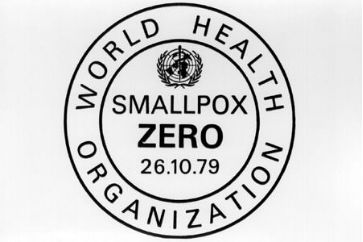- 翰林提供学术活动、国际课程、科研项目一站式留学背景提升服务!
- 400 888 0080
A-level生物Public health| 唯一被消灭的病毒:天花
天花(small pox)是由天花病毒感染人引起的一种烈性传染病。 天花是最古老也是死亡率最高的传染病之一,从埃及法老的时代开始,天花病毒就在人类世界里肆虐,感染者们罹受发热和其他类似流感症状的折磨后,开始出现脓疱皮疹的症状,它杀死三分之一的感染者,使余下的幸存者们毁容甚至失明。
根据统计,曾有3亿人口死在了天花病毒的手上,如果不是因为18世纪70年代的英国医生爱德华-琴纳(Edward Jenner)发现了牛痘具有抵抗天花病毒的功能,或许至今我们人类仍处于天花病毒所制造的灾难之中。琴纳医生通过观察在农场工作的挤奶女工, 发现这些姑娘在长期与牛打交道的过程中,因感染上牛痘而具有抵抗天花的防疫力了,在经过无数次的实践之后,终于证明天花可以用种牛痘来预防,种痘在欧洲迅速的流传开来。在拉丁语中,牛叫Vacca, 牛痘叫Vaccina, 因此琴纳把通过接种牛痘来获得天花免疫力的方法叫Vaccination
(Related biology knowledge)
Small pox (eradicated): caused by Variola virus
Vaccination: is giving a vaccine containing antigens for a disease, either by injection or by mouth; vaccination confers artificial immunity
Artificial immunity: is immunity gained either by vaccination(active) or by injecting antibodies(passive).
唐纳德亨德森(Donald Henderson)是一名美国流行病学家,在在1960到70年代,他从美国疾病控制与预防中心被借调到世卫组织十年之久,指挥一小队公共卫生官员们和一大批实地工作者们,为消灭天花病毒这项不亚于医疗登月的伟大行动而努力。
畅销书作家理查德·普莱斯顿(Richard Preston)曾说:“很公平地讲,我认为根除天花就是医学历史上最伟大的成就,没有之一。
这场战役总共花费了大约3亿美元,世界卫生组织(WHO)采用了一种环状接种策略(ring vaccination),首先定位天花患者,隔离他们,为所有与其接触过的人接种疫苗,然后再再对与这些人接触过的所有其他人接种疫苗。
天花战役的胜利也同时得益于其有效的疫苗,它被设计为一种可以抵御高温,方便携带的冻干形态,同时接种时使用的分叉针头也让非专业人员可以轻松使用,感染症状(symptoms)非常好辨认, 并且天花没有动物天花病的天性也为这项行动提供了优势:病人的疮使感染者很好辨认,而且天花病毒不会感染动物(easier to break of transmission cycle)。
一名索马里人(Ali Maow Maalin)在1977年感染天花,并被认定为世界上最后一个自然感染天花病的人。在他感染的三年后,世界卫生大会宣布天花已被根除。

(Related biology knowledge)
How the eradication programme succeeded?
The variola virus was stable; it did not mutate and change its surface antigens. This meant that the same vaccine could be used everywhere in the world throughout the campaign. It was therefore cheap to produce.
The vaccine was made from a harmless strain, as a ‘live vaccine’
The vaccine was freeze-dried and could be kept at high temperatures for as long as six months. This made it suitable for use in the tropics.
Infected people were easy to identify.
The vaccine was easy to administer, ‘bifurcated needle’ had two prongs, which were used to push the vaccine into the skin.
The smallpox virus did not linger in the body after an infection to become active later and form a reservoir of infection.
The virus did not infect animals, which made it easier to break the transmission cycle.
Many 16- to 17-year-olds became enthusiastic vaccinators and suppliers of information about cases; this was especially valuable in remote areas.

最新发布
© 2025. All Rights Reserved. 沪ICP备2023009024号-1









